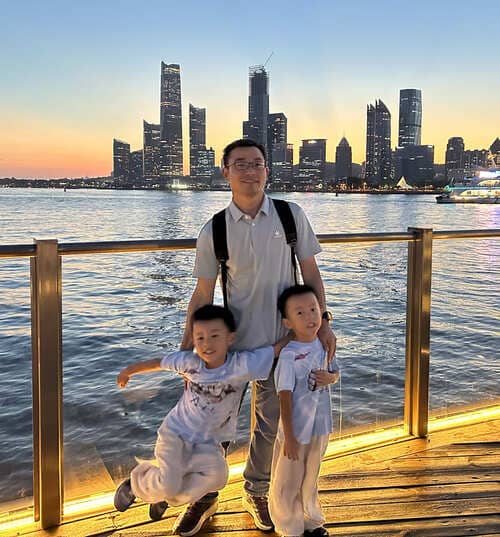Film crews work fast, often in hard conditions. They need lighting that’s soft, stable, and easy to set up. Balloon lights1 solve many of their problems. But how are they actually used on set?
Balloon lights are used in film and TV for soft ambient light2ing, night shoots, wide scene coverage, portable lighting in remote areas, and glare-free fill light for actors and sets.

I remember my first time using a balloon light on a night shoot. We needed to light a forest without shadows and with natural-looking soft light. Traditional lights gave us glare. But the balloon tower changed everything. It floated above the trees, giving us a soft, even glow. The director called it “moonlight on demand.” Since then, balloon lights have become our go-to.
How Do Balloon Lights Create Natural Ambient Light?
Traditional lights cast hard shadows. That breaks realism. Balloon lights fix that by surrounding the set with gentle light.
Balloon lights diffuse light evenly, simulating natural daylight or moonlight, making them ideal for ambient fill on wide shots.

Balloon lights float high and spread light in all directions. That makes them different from floodlights or spotlights. On set, we often suspend them with cranes or tripods above the scene. This mimics the look of real daylight or a full moon. Shadows fall soft. Faces look smooth. The camera loves it.
I’ve worked on commercials where the art director wanted daylight at midnight. We flew a 1000W LED balloon tower, tuned to 5600K, and lit a full street without a single harsh shadow. It looked just like noon on camera.
Here’s why ambient light matters in film:
| Factor | Traditional Lights | Balloon Lights |
|---|---|---|
| Shadow Quality | Harsh | Soft |
| Light Spread | Directional | 360° |
| Mood Consistency | Hard to match | Natural |
| Skin Tone Appearance | Unforgiving | Smooth, even |
Balloon lights give directors more control over mood and realism. That’s why they’re a favorite on big sets.
Why Are They Perfect for Night Shoots?
Shooting at night is tough. It’s dark, cold, and full of hidden hazards. Crews need strong light that doesn’t ruin the mood.
Balloon lights provide safe, low-glare illumination for night shoots, making them ideal for outdoor sets and action scenes.

I worked on a drama series where every episode had night scenes. We needed to light farms, fields, and forests—none of which had electricity. Our Moonlightia balloon towers came with battery packs. We inflated them, turned on the LED arrays, and the field lit up like early dawn.
The light was soft enough not to blow out skin tones, yet strong enough for the focus pullers and camera ops to see everything. No one tripped. No light stands got in the shot. And the director could work without stress.
Many crews also use RGBW balloon lights—like Airstar’s Sirocco RGBW—for stylized lighting. Red washes for horror. Blue for cold mood. I once lit a sci-fi set in deep purple and green using just two towers. It looked surreal and amazing.
How Do They Support Wide-Angle Scenes?
Big scenes need big light. Lighting a wide shot with traditional lamps creates hotspots and shadows.
Balloon lights offer 360-degree spread that evenly lights wide scenes, ideal for crowd shots, cityscapes, or open landscapes.

When filming a crowd scene or wide-angle dialogue, balloon lights reduce the need for multiple rigs. One or two towers can cover thousands of square feet. They sit above the action, out of frame, and remove the need for multiple bounced lights.
We shot a protest scene once with 300 extras. Only two balloon towers were needed. They lit the street, the faces, and the buildings in the background. Everything matched, and there was no need to relight each angle. That saved us hours. The gaffer said it was the best setup they’d used all year.
| Shot Type | Traditional Setup | Balloon Light Setup |
|---|---|---|
| Wide Crowd Scene | Multiple fresnels | One or two balloon towers |
| Dialogue in Open Field | Key + fill per angle | Single 360° light above |
| Chase Scene at Night | 6–8 light heads | 2–3 balloon towers |
This efficiency helps small crews. It also keeps big shoots on schedule.
What Makes Balloon Lights Great for Remote Locations?
Some shoots happen far from cities. In forests, deserts, mountains. No grid. No backup.
Balloon lights are lightweight, battery-ready, and easy to transport—perfect for remote location filming3.

We filmed in the desert once. It was a music video. No roads. No power. We hiked in with Moonlightia towers, two battery packs, and a tripod. In 15 minutes, we had a set. The light ran for five hours straight.
That kind of portability makes balloon towers a favorite for indie filmmakers and field crews. Even Airstar’s field lighting products follow this idea—quick to move, quick to light. Moonlightia’s inflatable lights are easier to carry because they use air instead of helium, and their LEDs are lighter than metal halide bulbs.
In places where weight, setup speed, and power draw all matter, balloon lights win. I even know some doc crews that keep a compact one in their car trunk.
Conclusion
Balloon lights help film and TV crews shoot faster, safer, and better—especially for night scenes, wide angles, and remote shoots where setup speed and natural lighting matter most.
-
Explore how balloon lights enhance film production with soft, even lighting, making them essential for night shoots and wide scenes. ↩
-
Learn about the significance of ambient light in creating realistic and visually appealing scenes in film and TV. ↩
-
Discover effective lighting solutions for remote filming, ensuring quality production even in challenging environments. ↩




